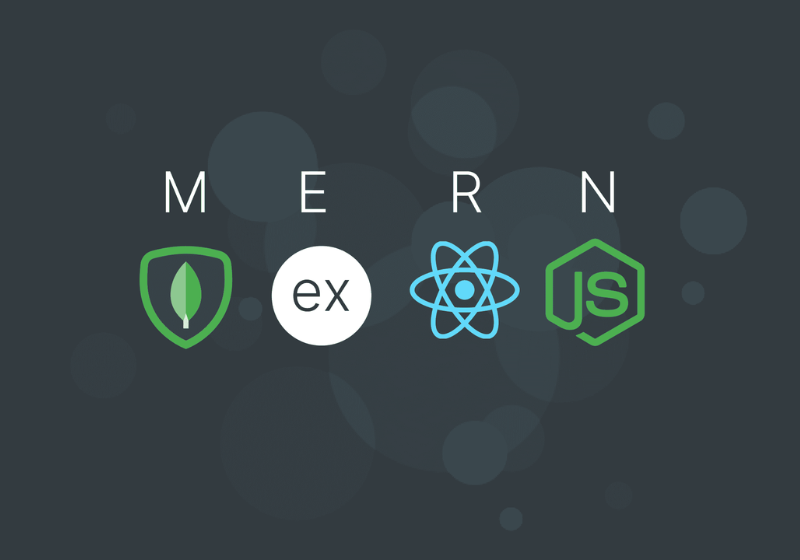Beginner's Guide to the MERN Stack

Introduction
Web development is a dynamic field that constantly evolves to meet the demands of modern applications. If you're embarking on a journey into web development, it's crucial to grasp the fundamental technologies that power web applications. One popular and powerful stack that developers frequently turn to is the MERN stack.
What is the MERN Stack?
The MERN stack is a full-stack JavaScript solution for building robust and scalable web applications. It comprises four key technologies:
-
MongoDB: A NoSQL database that stores data in a flexible, JSON-like format. MongoDB is known for its scalability and ease of integration with Node.js.
-
Express.js: A minimal and flexible Node.js web application framework that provides a robust set of features to develop web and mobile applications.
-
React: A JavaScript library for building user interfaces. React enables the creation of interactive and dynamic UI components for a seamless user experience.
-
Node.js: A server-side JavaScript runtime that allows developers to build scalable and high-performance web applications.
Understanding Each Component
MongoDB
MongoDB is a document-oriented database that stores data in flexible, JSON-like documents called BSON (Binary JSON). This NoSQL database is schema-less, allowing developers to store and retrieve data without the constraints of a predefined schema. MongoDB's scalability and ease of use make it an excellent choice for handling large volumes of data in web applications.
Express.js
Express.js is a minimal and flexible Node.js web application framework that simplifies the process of building robust web applications. It provides a set of features for web and mobile application development, including routing, middleware support, and template engines. Express.js is known for its simplicity, making it an ideal choice for developers to build APIs and handle HTTP requests.
React
React is a JavaScript library developed by Facebook for building user interfaces. It allows developers to create reusable UI components that efficiently update when the underlying data changes. React's declarative syntax and component-based architecture make it easy to build complex and interactive user interfaces, making it a popular choice for front-end development.
Node.js
Node.js is a server-side JavaScript runtime built on the V8 JavaScript engine. It enables developers to run JavaScript code on the server, facilitating the development of scalable and high-performance web applications. Node.js is event-driven and non-blocking, making it suitable for handling multiple concurrent connections.
Benefits of the MERN Stack
Single Language Throughout
One significant advantage of the MERN stack is the use of JavaScript for both the front-end (React) and the back-end (Node.js). This allows developers to use the same language throughout the entire development process, streamlining the development workflow and reducing context-switching between languages.
Reusable Components
React's component-based architecture encourages the creation of reusable UI components. These components can be easily integrated into different parts of the application, promoting code reusability and maintainability.
Scalability
The MERN stack is designed with scalability in mind. MongoDB's horizontal scaling capabilities, combined with the asynchronous and non-blocking nature of Node.js, make it suitable for handling large amounts of concurrent connections and scaling applications as demand grows.
Rapid Development
With the MERN stack, developers can rapidly prototype and build web applications. The combination of a flexible database, a robust back-end framework, and a powerful front-end library allows for efficient development without sacrificing performance or scalability.
Getting Started with the MERN Stack
Now that you have a basic understanding of the MERN stack components, let's walk through the steps to set up a simple MERN stack application.
Step 1: Install Node.js and npm
Make sure you have Node.js and npm (Node Package Manager) installed on your machine. You can download them from the official Node.js website (https://nodejs.org/).
Step 2: Set Up a MongoDB Database
Create a MongoDB database to store your application data. You can either set up a local MongoDB instance or use a cloud-based solution like MongoDB Atlas (https://www.mongodb.com/cloud/atlas).
Step 3: Create a Node.js/Express.js Server
Set up a Node.js server using Express.js. Create routes, handle HTTP requests, and connect your server to the MongoDB database.
Step 4: Build a React Frontend
Create a React application to serve as the front end of your web application. Design and implement React components to display data and interact with the server.
Step 5: Connect React to Node.js
Establish communication between the React front end and the Node.js back end. Use technologies like Axios or the built-in Fetch API to make HTTP requests from the client to the server.
Step 6: Test and Debug
Thoroughly test your MERN stack application, identify and fix any bugs or issues, and ensure that the application works seamlessly.
Step 7: Deployment
Once your application is ready, deploy it to a hosting service of your choice. Popular options include Heroku, Netlify, and Vercel for front-end deployments, and services like AWS or DigitalOcean for full-stack deployments.
Conclusion
The MERN stack offers a powerful and flexible solution for building modern web applications. By combining MongoDB, Express.js, React, and Node.js, developers can create scalable, efficient, and maintainable applications. As you delve deeper into the MERN stack, explore additional tools and libraries that enhance the development process, such as Redux for state management and Mongoose for MongoDB object modeling.
As you embark on your journey into web development, the MERN stack provides a solid foundation for understanding both the front-end and back-end aspects of building web applications. Happy coding!